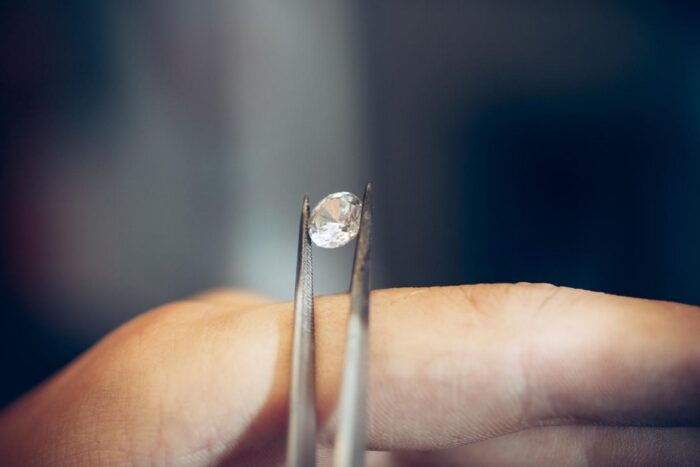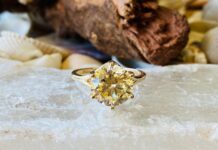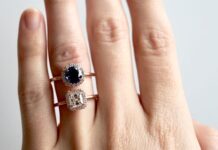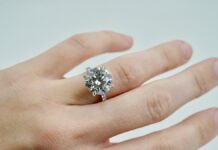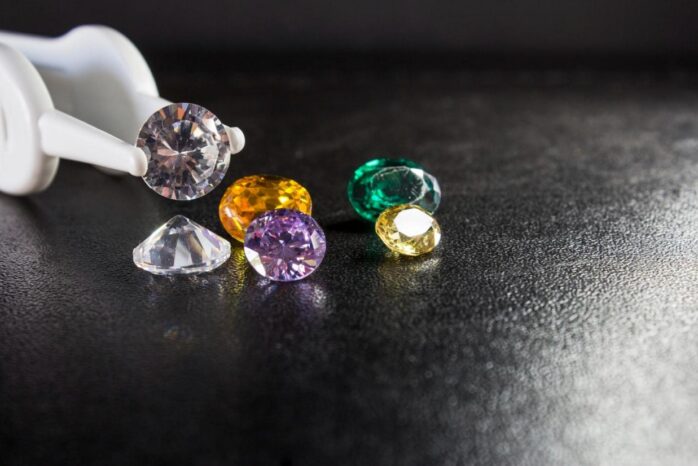
An engagement ring is a tangible symbol that celebrates the love between two people. It’s also jewellery worn on one of your most active body parts – your hands. So when considering your centre stone, it’s important to choose carefully, as this element can influence the overall look of the ring as well as your comfort for daily wear.
Diamonds remain a classic choice for many couples when choosing a centre stone, as it has a historical significance. The first diamond engagement ring traces back to 1477 when Archduke Maximillian of Austria proposed to Mary Burgundy. Years later, diamonds gained popularity and have continued to signify the celebration of a union and cherished memory.
Despite the popularity of diamonds, many couples opt for alternative gemstones, such as moissanite, sapphires, emeralds, rubies, and morganite, as many options are available today. While many different gems can be stunning and unique, there are some key differences to consider when making your decision.
In this article, we will learn how diamonds compare to other popular gemstones and offer tips on picking the perfect engagement ring for yourself or your loved one.
Why Are Diamonds Popular?
Diamonds are the traditional choice for engagement rings, which remain incredibly popular today. There are several reasons why diamonds are so coveted:
- Rarity: Diamonds are rare and difficult to mine, which makes them valuable.
- Hardness: Diamonds are one of the hardest materials on earth, making them durable and resistant to scratches and chips.
- Sparkle: The way diamonds reflect light creates a unique and stunning sparkle that many people find irresistible.
- Symbolism: Diamonds have come to symbolize everlasting love and commitment, making them a popular choice for engagement rings.
Why Do Some Couples Prefer Alternative Gemstones?
While diamonds are undoubtedly beautiful, there are some downsides to consider. They can be expensive, ranging from a few thousand dollars to tens of thousands or more.
Additionally, some people may have ethical concerns about purchasing diamonds, as the mining and trade of diamonds have been associated with conflict and exploitation in some parts of the world. Although this conflict can be avoided by opting for lab-grown diamonds, many couples choose alternative gemstones based on their colour or other attributes they find attractive.
If you need help deciding between diamonds and alternative gemstones, it can be helpful to talk to a reputable jeweller like Alexis Gallery, who can guide you through the process with the help of their extensive knowledge and industry experience. Their custom engagement ring design process allows one-on-one guidance and communication to help couples make informed choices. Their team not only allows you to be hands-on with design but also provides extensive education in picking the best gemstone for your ring and lifestyle. They can help educate you about earth-mined diamonds, lab-grown diamonds, moissanite, sapphires, and other gemstones.
Diamonds vs Other Gemstones
Understanding the similarities and differences between diamonds and other gemstones is important to make an informed decision when choosing a centre stone.
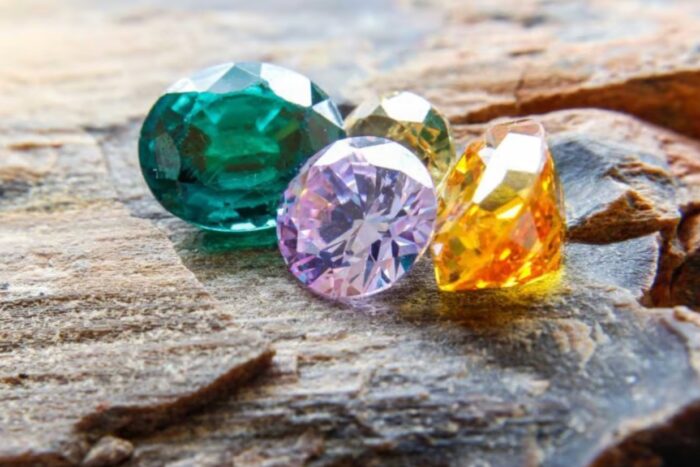
Colourless vs. Colour
A diamond’s colour is one of the most important of the 4Cs of diamonds, as the colour grade affects the stone’s physical appearance. The best-graded diamonds have an absence of colour, known as ‘colourless diamonds’. Diamonds with visible colour or a poor colour grade can appear slightly yellow, compared to a colourless or near colourless brilliant white.
If you’re looking for a colourless diamond, you can choose either a mined or lab-grown diamond. Mined and lab-grown diamonds are identical, as they have the same visual, molecular, and chemical properties. The only difference between them is their origin.
Another great alternative to a diamond is moissanite – this gemstone has very similar qualities to a diamond. Top-quality moissanite can be near-colourless and free of visible inclusions.
For couples that want a coloured diamond, it may be valuable to explore alternative gemstones in your research. Coloured diamonds are one of the most expensive options, and it’s possible your desired colour exists in different material such as sapphire (blue, violet, pink, etc.), emerald (green), ruby (red), and morganite (peach). Each gemstone is found in different colours, and they are all unique in their own way. When choosing a gemstone, it’s essential to consider your or your partner’s style, as this can significantly influence your final purchase.
Hardness & Durability
The quality of a gemstone is determined significantly by its hardness and durability. Gemstone Hardness refers to its resistance to scratches and abrasions. Durability is a gemstone’s ability to withstand wear, heat, light, household chemicals, and low or high humidity. Learn more about each popular gemstone’s strength and durability to streamline your decision.
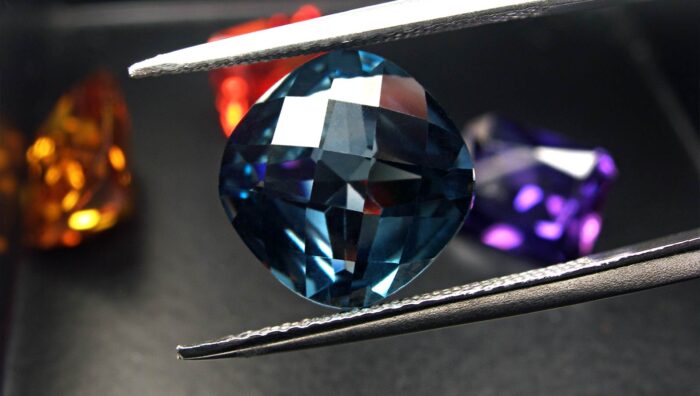
Diamond
Diamonds are popular for many engagement rings due to their hardness and durability. It sits at the top of the Mohs scale of hardness at number 10, known for being one of the hardest substances on earth.
Sapphire & Ruby
The corundum family of gemstones consists of ruby and sapphire, which ranks 9 on the Mohs scale, as it has excellent toughness and no cleavage, making it a great centre stone choice for daily wear.
Emerald
Although emerald is a popular gemstone choice due to its unique properties, it is ranked 7.5 to 8 on the Mohs scale, which is a good rating, but it requires more care to wear than a diamond, ruby, or sapphire. So, it’s important to be cautious when wearing an emerald.
Morganite
Like emerald, morganite is also ranked 7.5 to 8 on the Mohs scale, so it is a durable gemstone for jewellery if treated with care. Both emerald and morganite should be cleaned frequently and safeguarded by avoiding hard knocks and limiting the risk of scratching.
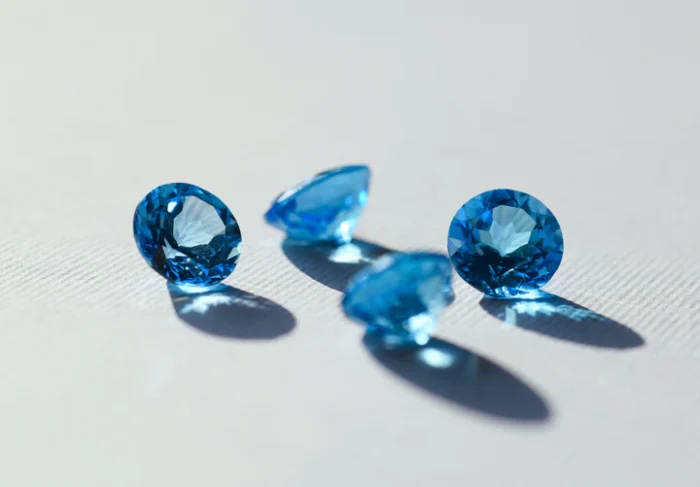
Budget
Your budget can significantly impact the choice between a diamond and other gemstones. Diamonds are typically more expensive than most other gemstones, including sapphires, rubies, emeralds, etc. You can opt for a coloured gemstone or a lab-grown diamond if you have a limited budget.
If budget is not a concern, a diamond may be preferred because of its durability, brilliance, and popularity as a symbol of love and commitment. Some people also prefer the classic look of a diamond engagement ring.
Picking The Ideal Gemstone Ring
The ideal gemstone looks different for every couple. Some prefer a traditional look, while others prioritize trends. For many couples, hardness and durability are top concerns, while the budget is a more significant deciding factor for others. Since there are many things to consider when choosing a diamond vs. other gemstones, this article can streamline the decision-making process and help you select the diamond that symbolizes your commitment to your partner.

